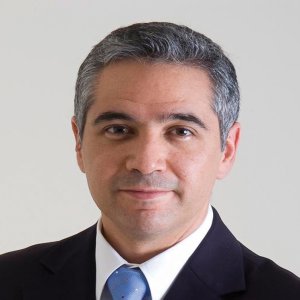Tooling and Texturing Needs the Right Technicians

STORY INLINE POST
“The home-made Mexican tooling and texturing market is underdeveloped, as 95% of the tools in the Mexican automotive industry come from foreign countries,” explains Mario Partida, General Manager of MoldTech Latinoamérica. “For texturing, there are local competitors that can do basic things with acid but they work for non-automotive industries. They do not have the knowledge or infrastructure to gain OEM approval or to properly carry out orders in accordance with OEM procedures,” he says. However, Partida does not feel Mold-Tech is in the same position. The company has been developing mold and texturizing technology for over 60 years and Partida believes that the Mexican market does not provide any direct competition at the moment. For Mold-Tech, the automotive industry represents 60% of its sales in Mexico while the other 40% is divided across industries such as electronics and furniture. Despite this automotive dominance, Partida acknowledges that its automotive services and product portfolio in Mexico is small as compared to its global operations. “We are here to support and give service to the tooling that is textured in Canada or the US,” explains Partida. “We provide repairs and general changes so customers do not need to send tools outside the country,” he adds. In 2013, the company expanded into a new facility in Queretaro that specializes in texture repairs. Since the facility’s opening, it has netted Tier 1 and 2 clients, including TRW Automotive, Mann+Hummel, Nihon Plast, and Kasai. Beyond working with established companies, Mold-Tech also has the capacity of texturing new molds for automotive suppliers that enter Mexico without texturing capacity.
“Mold-Tech is the only option in the Mexican market. Customers that do not want to work with us have to look for options in the US. We are able to work with suppliers and OEMs by bringing specialized technicians to repair tools in the most important automotive centers,” says Partida. This has seen Mold-Tech’s Mexican technicians become very familiar with the needs of OEMs and tool providers in the country. Although training this team specialized in local tooling and texturing needs is an evident advantage, Mold-Tech has one more aim in mind. “Given that most of the technologies used for these purposes are new to the Mexican market, Mold-Tech needs to improve the skills of the relevant labor force to exploit these opportunities. We already have the right people to take charge of these new processes,” explains Partida. To make good on its pledge to continue training Mexican workers, Mold-Tech brings in experienced technicians from abroad that know the right patterns and tools. This has been its strategy since 2004, when it first brought in an American technician to train its initial crop of Mexican staff. “The complexity of the tooling and texturing industry means that the training period is not to be underestimated,” says Partida. “Potential technicians may need to study for between three and five years before they can carry out jobs for Mold-Tech without supervision.”
By training its people to master new technologies, MoldTech has another solid advantage in the priorities it sets for its own R&D investment. The first is laser technology, for which the company is developing new equipment to texturize products for operations which are still done by hand. For Partida, laser technology represents the future of automotive tooling, but he explains that it must first evolve to be able to handle any tool, regardless of size or geometry. “We also need to see if OEMs are going to be happy with the finishes that lasers can provide, since these differ from the ones they are used to,” explains Partida. The second line is the development of original designs and textures for newly released vehicle models. “We work directly with our clients to help our designs match their original ideas and industry trends. For example, one Japanese designer wanted the pattern of a leaf on its car. To make this vision a reality, we scanned the leaf pattern, and developed the prints to begin acid testing and get as close as we could to the original idea. This close duplication of natural patterns is currently very popular among automotive designers.”
Given the level of automotive growth seen in Mexico, Mold-Tech firmly intends to claim its own portion of the market. Partida points to domestic toolmakers beginning to build an increasing amount of molds, which will help the texturing business to grow. Furthermore, with the likes of Honda and Mazda now being mainstays in the country’s automotive market, the company has set itself the target of growing 25% year-on-year in Mexico. “At first, we expect to see more demand for repairs while we wait for toolmakers to start building new tools in Mexico. We are also busy securing the approval to use the proprietary patterns of Mazda and Honda. When these OEMs are ready to secure such patterns within Mexico, Mold-Tech will already have the procedure and the grain approval tech data. This does take time, however, as we must match the textures for each pattern of each OEM. It is complex, but we can do it,” claims Partida.



















